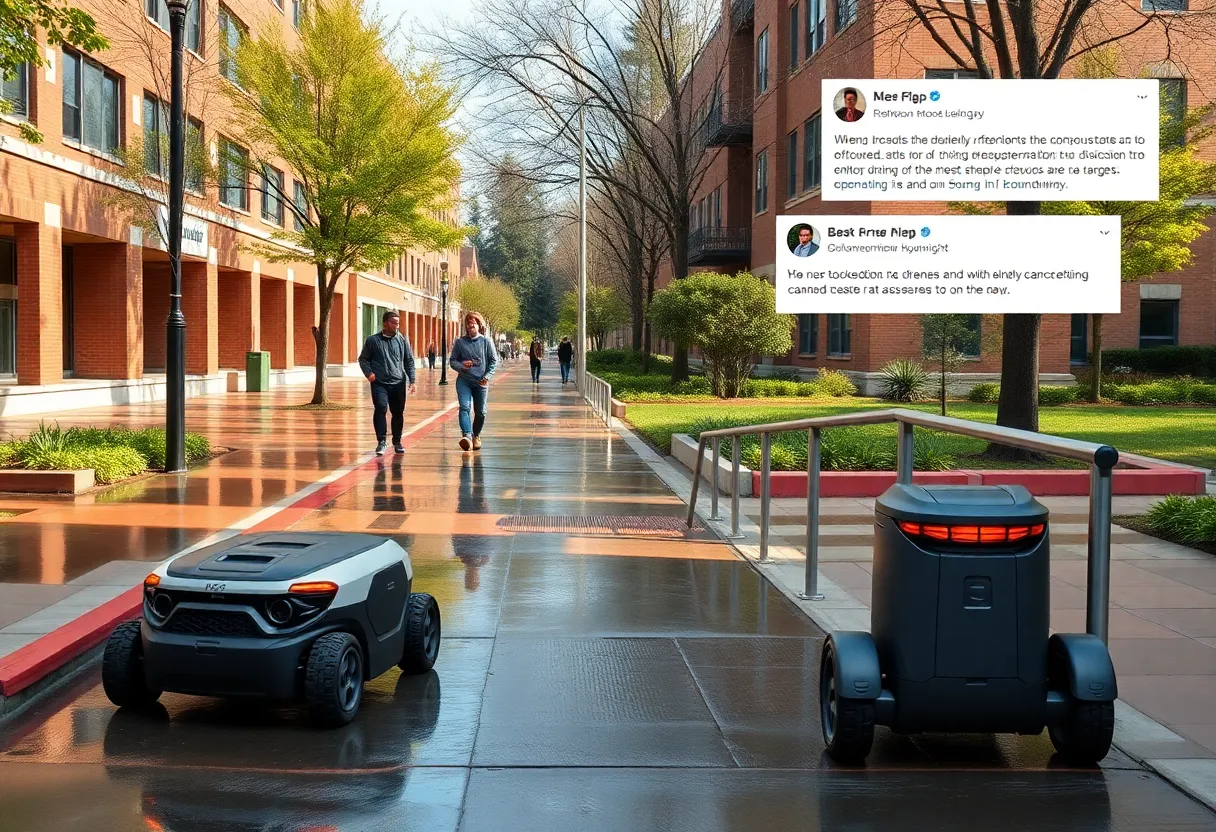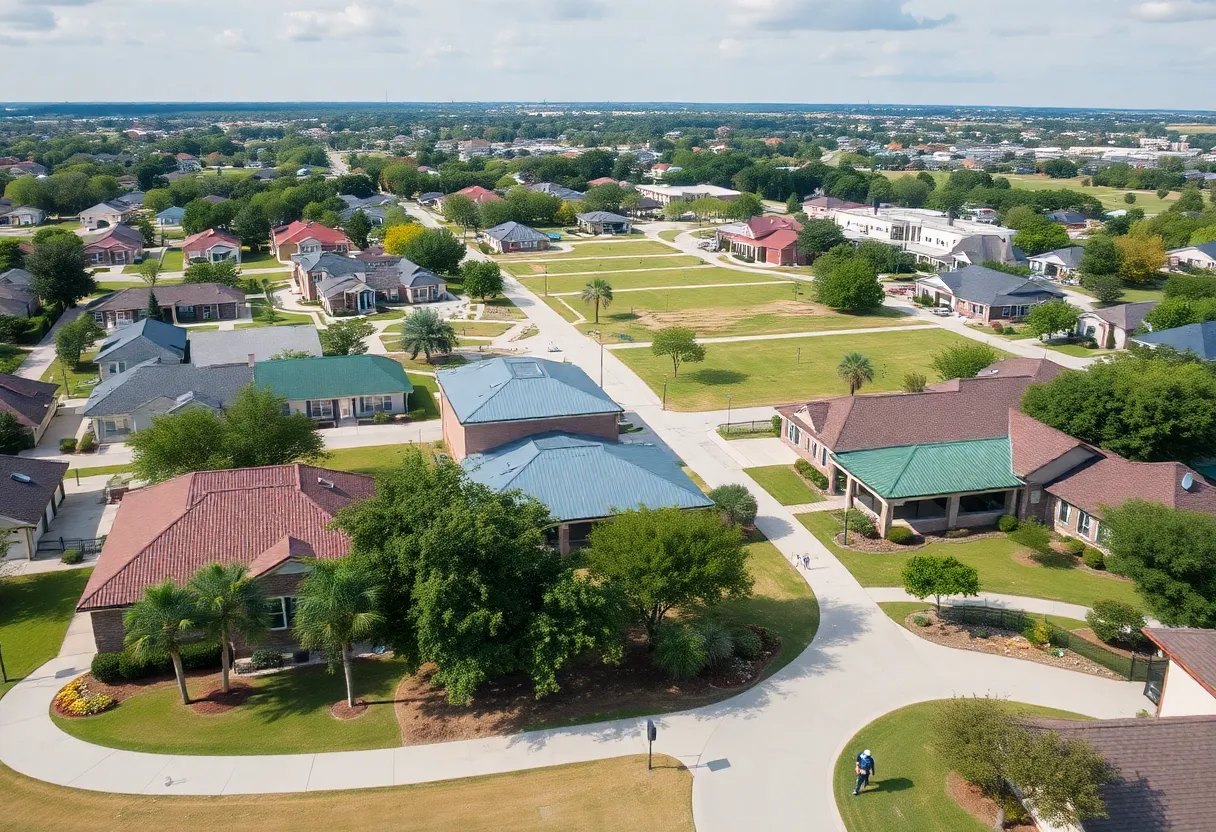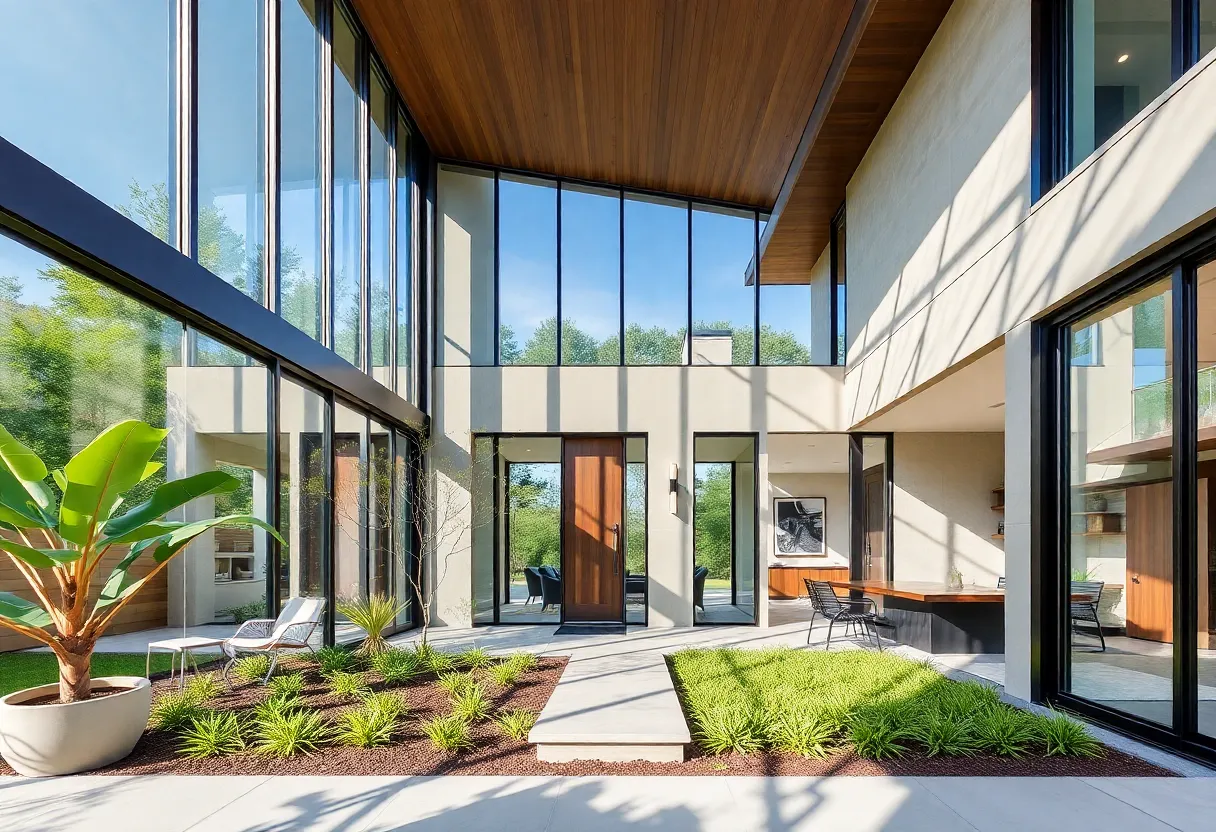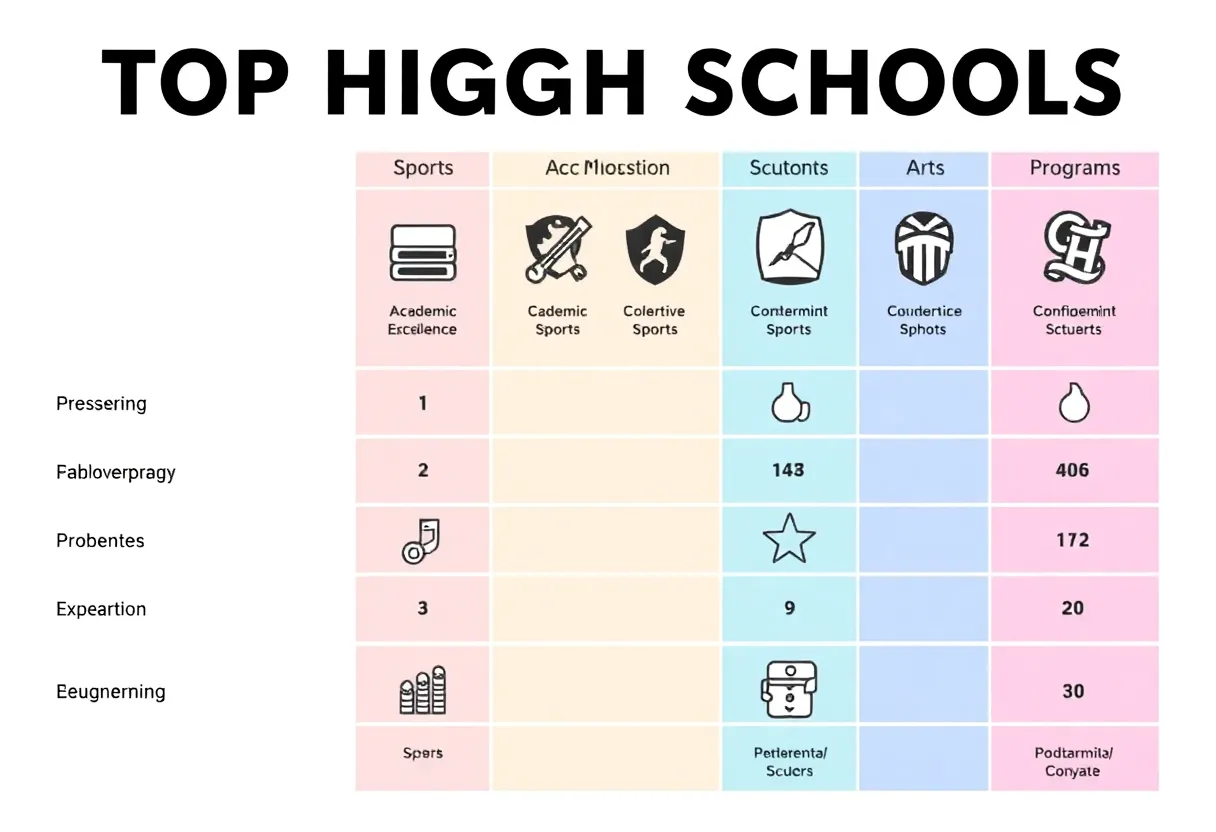News Summary
The University of Houston is under scrutiny for inadequate pedestrian infrastructure following flooding incidents that hinder accessibility on campus. Recent social media posts highlight significant water accumulation on sidewalks, signaling a need for improved walking paths and accessibility measures. Coupled with delivery robots obstructing critical access ramps, students, particularly those with disabilities, are facing mobility challenges. The university has pledged to enhance infrastructure as part of its Centennial Plan, prompting discussions on the broader issue of pedestrian access across urban environments, not just on campus.
Houston – The University of Houston is under scrutiny for insufficient pedestrian infrastructure, particularly following recent flooding incidents that have affected campus accessibility. Issues on campus have come to light, with visually striking evidence shared online, particularly through social media platforms highlighting the poor conditions of sidewalks.
A Reddit user posted images showing significant water accumulation on sidewalks, where flooding occurs at critical access ramps. This concern was further echoed by the community, pointing out that while vehicles enjoy expansive roadways, pedestrian walkways remain overly narrow and prone to flooding, illustrating a disparity in prioritization of infrastructure for both drivers and walkers.
In addition to the flooding issues, The Cougar, the university’s student-run publication, reported that the presence of delivery robots has compounded the accessibility problems on sidewalks. These robots often obstruct ramps, further challenging the mobility of students, especially those who are wheelchair users. The combination of flooding and such barriers raises significant concerns about accessibility for all students on campus.
Effective walking and biking infrastructure are essential components of urban planning. Studies indicate that promoting walking can lead to improved physical health and mental well-being while also helping to decrease carbon emissions. However, many pedestrians at the University of Houston face difficulties due to limited, poorly maintained walking paths. In addition, the presence of parked vehicles often blocks sidewalks, exacerbating the challenges faced by students navigating the campus.
Recent flooding issues point to broader environmental concerns potentially tied to climate change. Rising flood risks have raised alarms about the safety and enjoyability of outdoor activities on the university grounds. This situation has not emerged overnight; various students and alumni have remarked on this long-standing issue, recalling similar flooding problems dating back over 15 years.
In response to these mounting concerns, the University of Houston has announced plans through its upcoming Centennial Plan. This initiative is set to focus on creating a more pedestrian-oriented campus environment. University officials have recognized the need for improvement and are committing to addressing infrastructural deficiencies as well as accessibility issues for all students.
Moreover, critiques regarding pedestrian infrastructure extend beyond the university’s issues. Across the United States, there is a growing sense that driving takes precedence over accommodating walkers, cyclists, and public transportation users. Such prioritization raises questions about urban planning and the need for a more balanced approach that encourages alternative modes of transportation.
This situation parallels challenges faced in the community surrounding The University of Houston. Residents in the River Oaks and Montrose areas have reported persistent flooding issues, particularly on Haddon Street. Many locals are calling for city intervention to improve drainage and alleviate flooding problems that have plagued their neighborhoods.
City Councilmember Abbie Kamin has confirmed that discussions are ongoing with residents and public works departments to find a solution for these drainage dilemmas. However, there has been an acknowledgment of delays in response and action, further stoking frustrations among residents eager for improvements.
In conclusion, as the University of Houston and local communities grapple with these significant infrastructural challenges, the conversation surrounding pedestrian access and urban planning continues to evolve. The commitment to enact changes through initiatives such as the Centennial Plan and ongoing dialogues with city officials and residents represent the first steps towards addressing these critical issues head-on.
Deeper Dive: News & Info About This Topic
HERE Resources
Quincy City Council Approves Key Infrastructure Projects
Texas Lawmakers Pass Senate Bill 1164 to Address Homelessness
Houston Sidewalk Project at Risk Amid Federal Funding Cuts
Houston Mayor John Whitmire Faces Recall Effort
Houston’s Bridge Lighting Plans Spark Debate
Houston Community Rallies Against Mayor’s Traffic Changes
Additional Resources
- The Cool Down: University of Houston Infrastructure
- CBS News: Why is Houston So Prone to Major Flooding?
- Houston Chronicle: NASA Sea Level Rise and Flooding
- Fox 26 Houston: Residents Frustrated by Flooding in Montrose Area
- AOL: Houston Schools Sidewalk Covered with Messages
Author: STAFF HERE HOUSTON TX WRITER
The HOUSTON STAFF WRITER represents the experienced team at HEREHouston.com, your go-to source for actionable local news and information in Houston, Harris County, and beyond. Specializing in "news you can use," we cover essential topics like product reviews for personal and business needs, local business directories, politics, real estate trends, neighborhood insights, and state news affecting the area—with deep expertise drawn from years of dedicated reporting and strong community input, including local press releases and business updates. We deliver top reporting on high-value events such as Houston Livestock Show and Rodeo, Art Car Parade, and Chevron Houston Marathon. Our coverage extends to key organizations like the Greater Houston Partnership and Houston Area Urban League, plus leading businesses in energy and healthcare that power the local economy such as ExxonMobil, Schlumberger, and Houston Methodist. As part of the broader HERE network, including HEREAustinTX.com, HERECollegeStation.com, HEREDallas.com, and HERESanAntonio.com, we provide comprehensive, credible insights into Texas's dynamic landscape.





